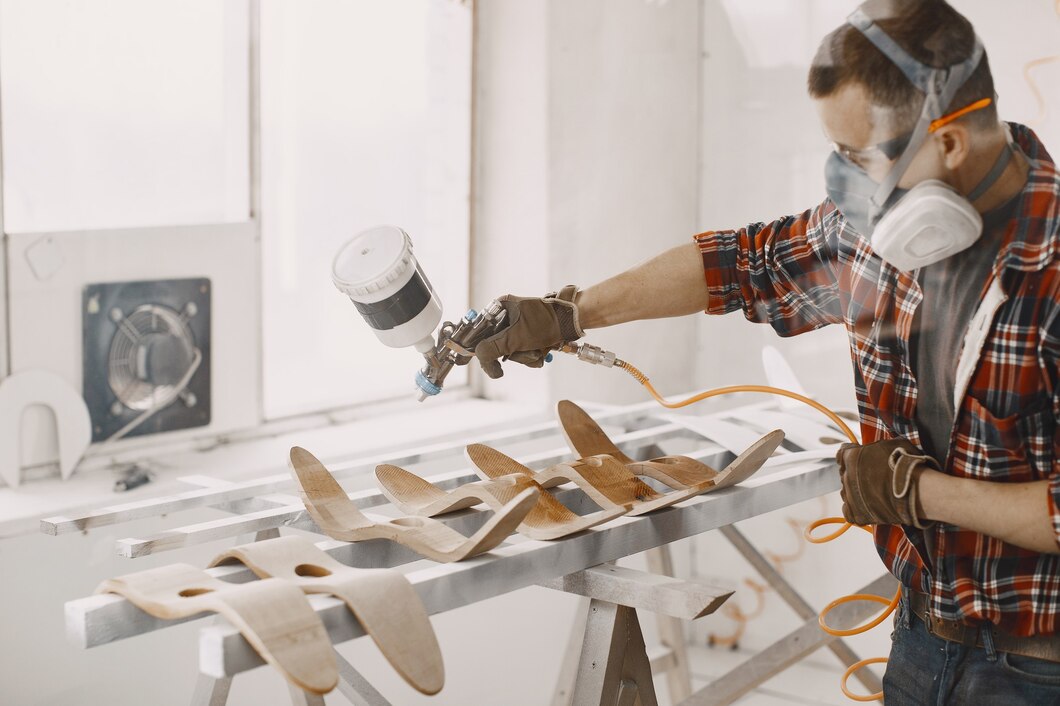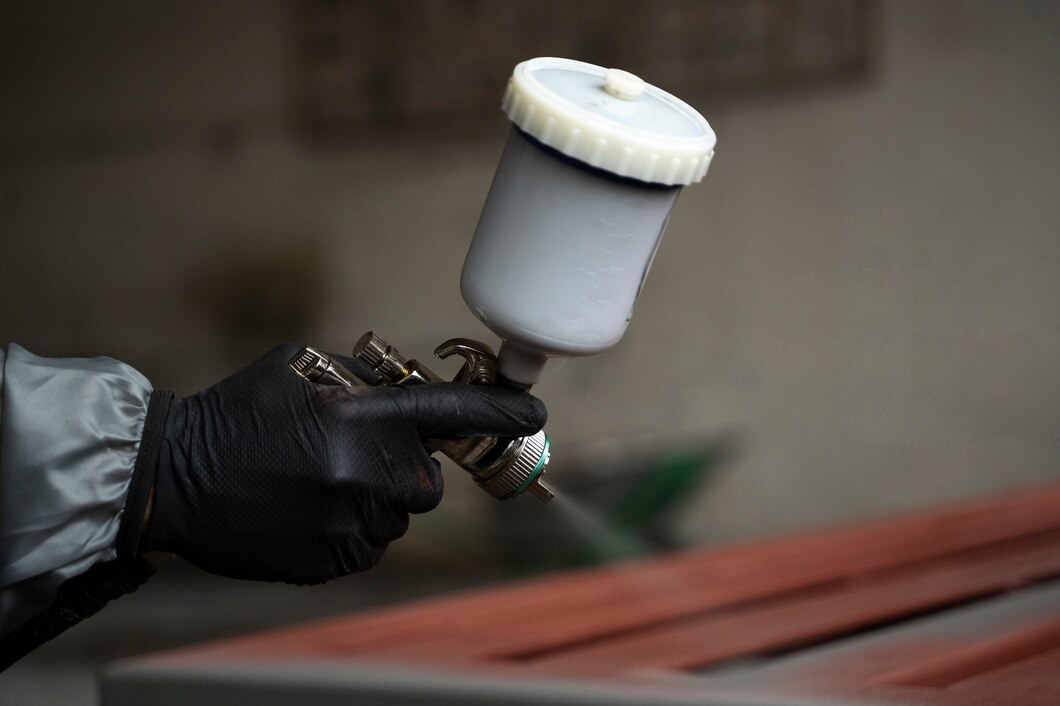Airbrushing offers numerous benefits for wargaming, scale models, and other applications. It is a preferred painting method for users and creators alike. Selecting the right set is crucial for achieving the best results.
What Is an Airbrush and How Does It Work?

At its core, an airbrush is a precision tool that mixes air and paint to create a fine mist, allowing for smooth, controlled spraying. But how exactly does it work?
Learning the basic components of an airbrush can help you understand how it works.
- Trigger. Controls air and paint flow.
- Needle and nozzle. Regulate the size of the spray pattern.
- Paint cup. Holds the paint—position varies by type.
- Air cap. Shapes and directs the spray pattern.
When you press the trigger, air flows from the compressor through the airbrush body. This creates suction, pulling paint from the reservoir and atomising it into tiny particles. In a dual-action airbrush like this, pressing down controls air, while pulling back controls paint flow. The further you pull, the more paint gets mixed in. With light pressure, you can create fine lines. Pulling the trigger further back gives you broader coverage. Mastering this control is key to great airbrush work.
What Are the 2 Types of Airbrush?
You’ll notice two main types when exploring the range of hobby airbrushes online–a single-action or double-action air/fluid control mechanism. Selecting the best one depends on the airbrush application or personal preference. Single-action airbrushes are ideal for artists who only need covering while the double-action airbrush is a frequent choice for those who like more intricate and precise work.
Single-action Airbrushes
The single-action airbrush system uses the basic spraying application of spray paint cans. The user depresses the trigger to get the paint to spray via the airbrush. A knob, typically found close to the airbrush tip, controls how much paint is released. This airbrush type is commonly known as an external mix airbrush since the paint and air mix in front of the needle.
Because single-action hobby airbrushes are so simple to operate and maintain, they're an excellent option for novices. They are easier to control since they are less complicated than the double-action control system. This type's drawback is that it lacks the precision of a double-action airbrush. The single-action model is perfect if you want greater overall coverage but don't need an airbrush with high precision.
Double-action Аirbrushes
Although the double-action airbrush is a bit more complicated than the single-action, it offers more control. To regulate the airflow and initiate the paint flow, the artist depresses the trigger. The spray pattern widens when the trigger is pulled back because more paint is sprayed. This kind is known as an internal mix airbrush since the paint and air are combined behind the needle.
The double-action airbrush's ability to create and mould extremely tiny lines is one of its benefits. The additional precision control makes this type a popular choice for t-shirt and freehand artists. Double-action models have the drawbacks of being more costly than single-action models and being more challenging to operate because you have complete control over the paint flow.
Types of Feed Systems
The process of combining paint and air is known as the airbrush feed mechanism. The suction-feed, side-feed, and gravity-feed are the three techniques. How much paint the airbrush can retain before needing to be refilled is the primary distinction between these two systems.
Gravity-feed
Gravity feeds distribute paint to the airbrush by using the principle of gravity and feature a colour cup on top of the airbrush. Unlike syphon-feed variants, the cup cannot be removed. Larger cups can be installed in certain gravity-feed airbrushes by simply unscrewing the interchangeable cups. Typically used for fine to medium detail work, gravity-feed airbrushes have nozzle diameters between 0.15mm and 0.4mm.
Suction-feed
A bottle that is fastened beneath the airbrush is used in the suction-feed technique. The paint is sucked out of the bottle and mixed with the airflow by the compressor's air pressure. For artists who need to quickly chop and switch between colours, these airbrushes are ideal. The syphon-feed airbrushes have nozzle sizes between 0.35mm and 0.6mm, making them perfect for covering bigger areas.
Side-feed
Side-feed airbrushes are equipped with a suction feed bottle or gravity cup that attaches to the side of the brush. The cup or bottle is perfect for airbrush artists working at challenging or extreme angles since it can be locked into place and spun 360 degrees.
What Comes in a Beginner-Friendly Airbrush Kit?

A beginner-friendly kit with all the components you need is a great idea if you’re just starting out. With the right setup, you’ll be on your way to mastering airbrushing in no time! Here’s what you need to look for.
Essential Components
- Airbrush. A dual-action, gravity-feed model offers better control for detailed work.
- Compressor. A quiet, adjustable compressor ensures smooth airflow.
- Air hose. The hose connects your airbrush to the compressor for consistent performance.
- Paints. Water-based acrylics are beginner-friendly and easy to clean up.
Must-have Accessories
- Cleaning kit. Brushes, a spray-out pot, and a cleaning solution keep your airbrush running smoothly.
- Extra needles and nozzles. Spares prevent downtime if parts get clogged or damaged.
- Protective gear. A good-quality mask keeps you from inhaling fine paint particles.